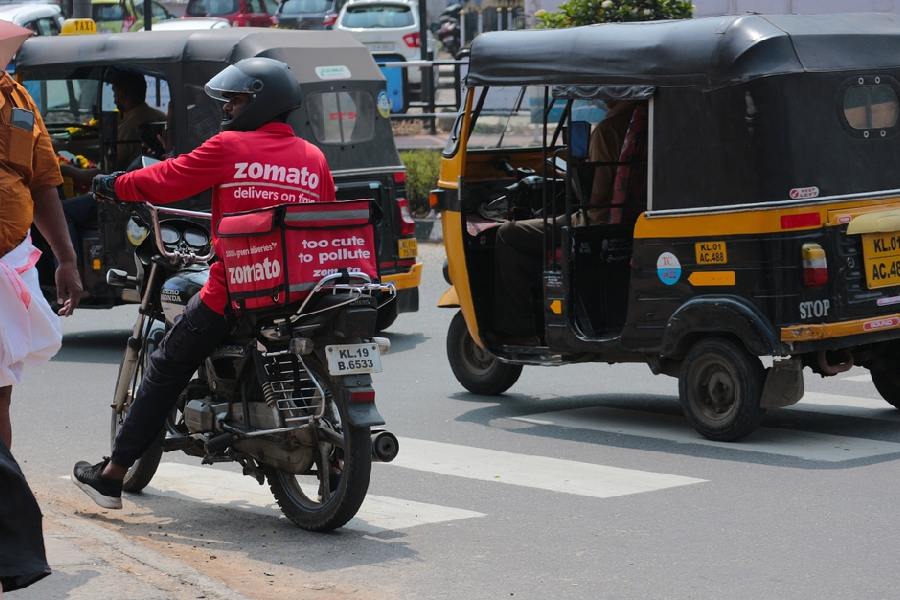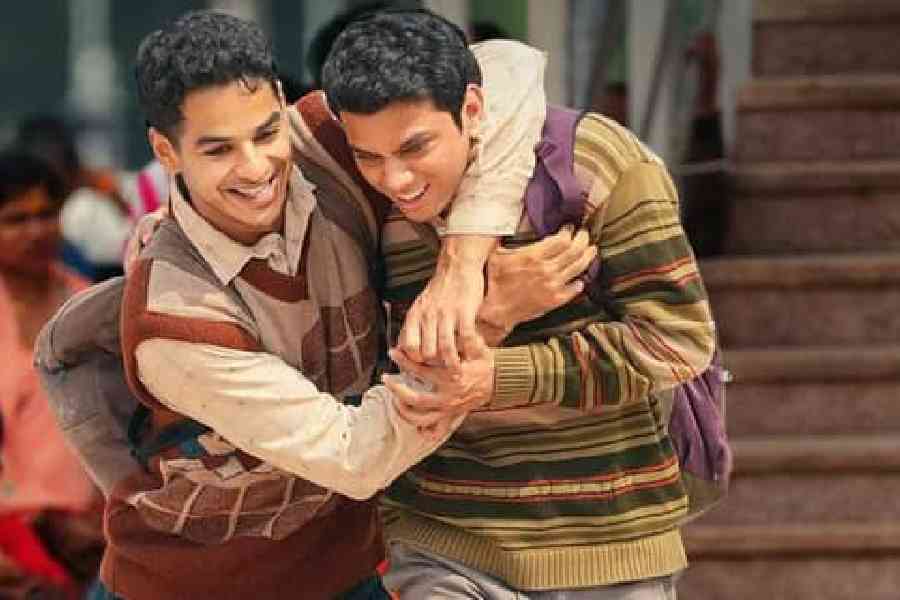|
|
Two recent encounters with the food at Oh! Calcutta led me to return to Orwell’s famous essay, “The Decline of English Cooking”. Except there was no such essay. The piece I’d confused it with is a brief, lovely thing called “Decline of the English Murder” — in which Orwell reviews the passing of a certain form of domestic homicide in England (involving adultery or jealousy, undertaken in stealth by respectable members of society) in favour of a new species of gratuitous violence. No, the essay I was looking for is called “In Defence of English Cooking” — for how could the reputation of that entity (cuisine is too posh a word for it) possibly have ‘declined’ any further? In 1945, when Orwell wrote this piece, that reputation had already reached its lowest nadir; as he points out: “It is commonly said, even by the English themselves, that English cooking is the worst in the world.” Orwell then launches into his “defence”, describing a lineage of Keatsian plenty — by ‘Keatsian’, I mean a plenty which, even at its best, is tinged with lack: as it would have been in the England of rationing in 1945. And yet the array he invokes is, for that very reason, delightful — as is the ground-breaking impropriety of the essay itself, because English cooking doesn’t seem like a fit subject for any kind of writing: literary, journalistic, or culinary. So it’s with pleasure we attend to “kippers, Yorkshire pudding, Devonshire cream, muffins and crumpets... treacle tart and apple dumplings... innumerable kinds of biscuit... new potatoes [cooked] in the English way — that is, boiled with mint... not to mention redcurrant jelly... [t]hen there are the English cheeses”.
I thought of this essay when I realized that almost the only restaurant that served anything like consistently good Bengali food — Oh! Calcutta — had lapsed into mediocrity. (May I digress here and remark on the Bengali tendency to take labels pertaining to their city out of context, and to reuse them guilelessly, without a trace of irony. Oh! Calcutta! as we know, is the name of a semi-pornographic West End production from the early Seventies. Thankfully, the term “city of joy” from the ghastly book and film of that name, seems to have gone out of circulation; and, for some reason, it hasn’t occurred to anyone to name a bar City of the Dreadful Night. But this is a puzzling tendency that deserves a separate essay.)
I suppose I should start by saying that Bengali cuisine is a great cuisine, although it’s a great unknown. I mean, besides the one restaurant I’ve cited, there are no retail chains or outlets on a national scale to promote Bengali food; only, in various cities, private delivery services set up by someone’s aunt. In this, it’s like two other distinguished Indian cuisines that, in spite of their delectable quality, have never been properly marketed — the Goan and the Parsi. Goan food at least bustles in its own region; but Parsi food, belonging to a community of historical exiles, is only available at a few cultish restaurants in Bombay, and at ceremonies and weddings no one but Parsis and their close friends have access to. Bengali food, though, outdoes both these cuisines in terms of range and variety, especially in the amazingly intricate and fragrant gradations of its vegetarian fare. But, until not very long ago, Bengal didn’t even have a proper Bengali restaurant. The real custodians of Bengali food are not famous chefs (though the extinction of a strain of Oriya cooks who made the terrific food at Bengali weddings has been a real tragedy), but families — possibly, today, relatively few families. But there was always a great divide between the families that produced and consumed good Bengali food, and the great majority that dutifully and daily cooked food to be eaten unmindfully, and forgotten quickly. And even the dogged attempts of the majority are now replaced by the food rustled up by the part-time cook, who arrives in the morning, creates some daily variation of the cuisine, and leaves after two hours, possibly for another house.
Often, Bengali home cooking, which is still the incarnation in which this food is mainly found, is watery and insipid: very different, in this regard, from the spiced-up cooking of the rest of India, and more congruent, oddly, with the reputation English food had before it became chicken tikka masala. There may be many reasons for this. The influence of Bengali puritanism shouldn’t be underestimated. Given its zealous agenda, from the 19th century onwards, to do with self-denial, austerity, suggestiveness, and the implicit in life, literature, and taste (in every sense of that word), I’m surprised that more scholarly energy hasn’t been expended on the genealogy of this entirely modern moral domain of Bengali life. It must to a great extent be responsible for the colourless gravies in which fish swim unappetizingly in many of our homes. Secondly, there’s the imputation that food from West Bengal is sweetish and bland; from the East, robust, spicy, and full of flavour. This is probably a reminder that the West, being the cultural centre of Bengal for some two hundred years, embraced that reformist puritanism more completely than the East, which occupied the margins, remained eccentric and feudal, its cuisine benefiting from the Muslim influence that the West had more thoroughly supplanted. But even the provocative sauces of the East must have sprung from a mysterious syncretism, because, if you got to Bangladesh today, you find little evidence of the old and superlative technology of East Bengali food.
There’s a third reason for the aura of austerity around Bengali cuisine, and it’s fairly well known; paradoxically, it’s what engendered plenty. I mean the cruel dietary regime imposed on Hindu widows, forbidding them not only meat and fish, but various things including the putatively aphrodisiac onion and garlic. These bizarre strictures (now, surely, less adhered to) have led to a vegetarian repertoire unparalleled, I think, in its subtlety, with a range of condiments, ingredients, and approaches peculiar to the region: chhana, inaccurately and persistently translated as ‘cottage cheese’, and mashed in a way that makes it distinct from paneer; paanch phoron, the fragrant mix of aniseed, cumin, fenugreek, and the untranslatable radhuni and kalonji; the use of unground elements of garam masala without the frontal assault of onions and garlic. Unrelated to the widows is the ubiquitous use of mustard: mustard oil, which you have to be careful to heat to boiling unless you want an incongruous undertaste to the meal; ground mustard, which you must grind not only with energy but with a pinch of salt if it’s not to taste bitter. Raw mustard oil, of course, with either muri or boiled rice has provided a wasabi-like kick to generations of every class, from the destitute to the leisured. This is not to forget the other recurrent ingredient: the addictive, infinitesimal poppy seed or posto. Bengali food, in its deceptive way, is all about aroma and reticence. No doubt it was the aroma that caught the English writer, Geoff Dyer, unawares when he was in Calcutta earlier this year. “It looked like green gunk,” he said in surprise of the vegetables he’d had at Oh! Calcutta, “but tasted really good.” The food can seem unpromising, then, massed and overdone (the Bengali word for this is the expressive ghaynt), but the array of preparations, defined mainly by strange, serio-comic, two-syllabled words (labra, chaanchra, shukto, ghanto, dalna, chhakka, the exception being the evocative rasha), is a delicate combination of the vernacular and the sublime.
I wish to distinguish, quickly, between the decline I’m suggesting here and the well-worn tale of decline that is now Bengal’s. Unlike Bengali literature, cinema, music, and even science, Bengali food is a well-guarded secret. As a result, it isn’t actually seen to be in decline, and regularly receives endorsements from celebrity visitors who are searching hard, in Calcutta, for nice things to say: “I love mishti doi”; “I just love the fish here”. Leave aside the devastation of hilsa (how prescient Buddhadeva Bose’s poem, where he described their “gleaming corpses”, now seems), we know Bengal’s pabda and tangra are not what they once were. The venue for the best Bengali food — the wedding — is now a nightmare. There’s the hybrid catered food, of course, whose advent began 25 years ago with chilli fish fry; but, even when Bengali food is served, it’s often served cold. The sensory outrage of cold food and gravy is something that Bengalis, with their ‘good boy’ exam-oriented values, seem wholly indifferent to. Then, occasionally, there’s the spectacle of food being improvised not far from the toilet. If it’s a buffet, you’re confronted, finally, with a basin full of other people’s plates into which you must lower your own. The Bengali is now blind to this kind of ugliness. He has only, as Satyajit Ray once said to the Indian film-maker, to open his eyes.












